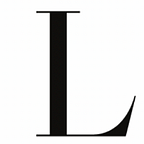Last week, our founders wrote about their journey in starting Lobus and we wanted to share with you here.
Lori and Sarah started Lobus with three objectives: transparency (demystifying the art world and making people feel comfortable in it), widening participation (allowing more people to interact with art in the way that worked for them) and empowering the artist and placing them in control (none of this would exist without the artist).
In 2018, Lobus was born. But the truth is, it was born many years earlier. Lobus was the tool they wish we had during their time together at Christie’s in the Post-War and Contemporary Art department where they managed $3B in annual sales, making their department alone the the largest art business in the world. Lobus came from lobus occipitalis (Lori and Sarah were told early on that wouldn’t work as a name for our company) but its origin is important. Your occipital lobe is your visual cortex which connects your brain to everything you see. They felt the art world deserved this — a central nervous system to everything one saw and visually experienced in the world. It needed an operating system, plumbing, a power grid that could give art the tools it deserved in a 24/7 global ecosystem.
At Lobus, we are helping the world manage its largest shared asset class on a mission to make artists owners. In 2021, we understand a future that is both physical and digital and we understand that this future state is right in front of us.
Building infrastructure
For us, this infrastructure has always meant about putting everyone in control of their information, building the future that will make artist owners and changing how we view ownership in art.
We believe it is about placing people in control of their information, giving context for decision-making and the tools and resources necessary to manage art. We also understand that roles are not singular. An artist may be a collector or vice versa; a gallerist may be a collector and beneficiary; a collector could also be an advisor. We believe the art world needed to speak the language of finance (1031s, tax strategies, capital gains, estate planning and gifting) and that the financial community needed a way to lend important expertise (the art world needs it). We want a framework that would make a new generation of collectors feel comfortable and could see that collecting was more about participating in contemporary culture than something they imagined belonging to a heavily cloistered world they were spending their lives innovating against. Most importantly, we believe that the artist deserved this tool more than anyone else — that there would be no art without the artist.
A values-driven company
At Lobus, we have commitment to a standard of excellence, the conditions under which great art is made. This cascades throughout our team and the way in which we strive to serve our users. Our values are tied to this. We have a commitment to quality, we champion curiosity and knowledge, we excel only with a diversity of perspectives and backgrounds, and like all great art, we must innovate daily. Most of all, we have a deep commitment to the artist because without the artist, none of this would exist.
We believe artists are owners. The artists with the most organized estates tend to have the strongest markets. This is no accident. By having control of their information, they are able to monitor their market, make sure the legacy is properly managed, deal with fakes and authenticity issues and support the spreading of knowledge around that artist and their contribution to the world. In the past, this has taken the form of catalogue raisonnes which are vastly important tools but have cost millions of dollars and decades to produce, and as a result, this level of control has only been available to a few. When you are just getting people to believe in you, you don’t set up the systems necessarily to contemplate 10,000% growth, ownership, control, and continuing financial participation.
The future with Lobus
Imagine a world in which an artist no longer has to sell 100% of their work. Could they create a great work of art and sell 75% with the right to custody. Or even better, could they sell just 1% but allow the buyer to live with the work? Could several museums co-purchase a work and still have the artist retain some portion of ownership? Could a collector share ownership? These are some of the problems we are working on solving at Lobus.
Imagine a world in which a collector walks into a gallery and by the time she has jumped in her Uber, the work she has just seen pops into her phone and is fully contextualized around that artist’s practice and is the market is currently supporting a $50,000 asking price. She can initiate payment immediately, can activate shipping (through Arta, of course), sync real-time to her insurance policy and give active updates until the work is safely hanging in her home. Squint even further, imagine the same collector being able to pull out her phone and connect with an artist who might be working in their studio that very afternoon or pulling her phone out at midnight and connecting to artists, art fairs, galleries and auction houses in the same way that she interacts with Netflix and Spotify.
We are about to enter our era’s Renaissance, one that weaves through the digital and physical, and Lobus is here to build this bright new future.
Come join us!
